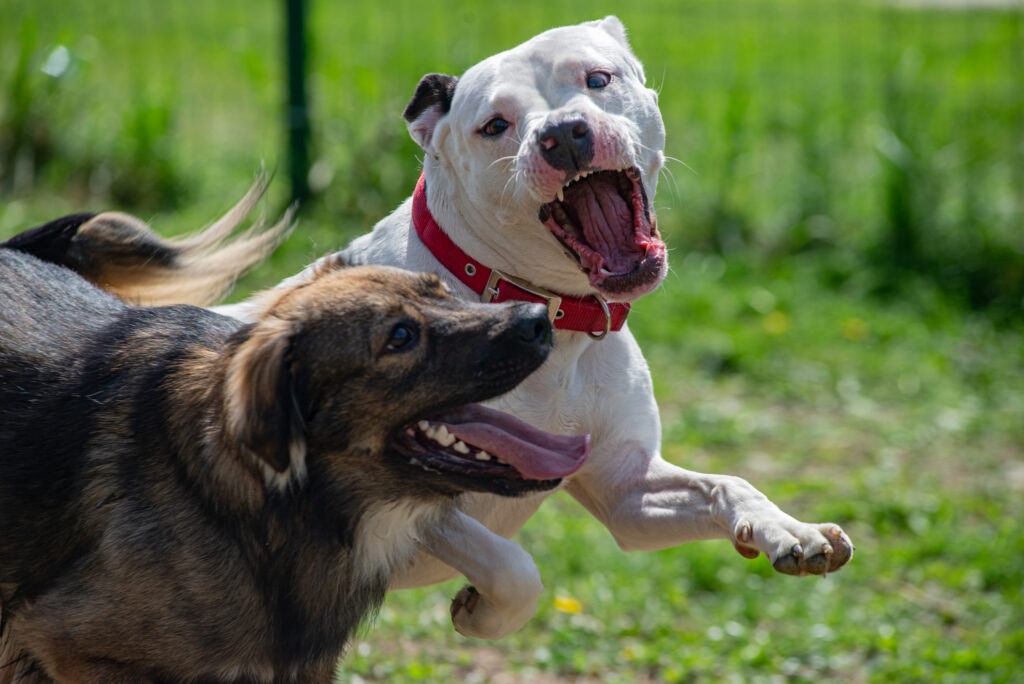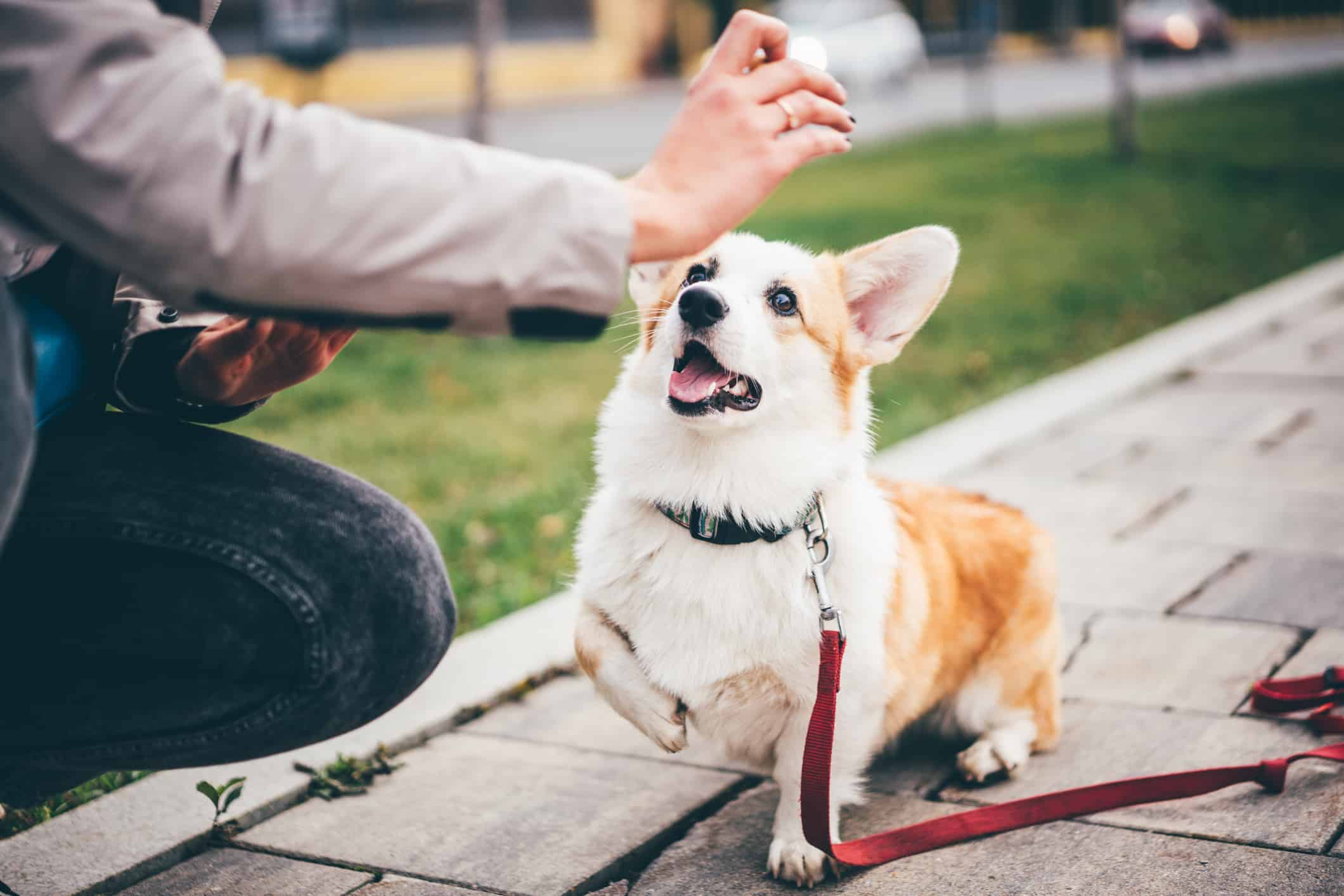There’s a pretty good chance that every dog owner has seen their pup do something that made them think to themselves, “You know, I wonder why they did that”.
These situations can vary from the mildly amusing (e.g. sprinting endless laps of your home, a la ‘the zoomies’), to the annoyingly frustrating (e.g. going to the bathroom in the house), all the way to the downright dangerous (e.g. severe aggression towards humans or other dogs).
In this article, we’re going to summarize some of the more common misconceptions we’ve heard over the years when it relates to dog training, and talk about what might actually be happening in these situations.
But first - why does this matter?
As a dog owner, misdiagnosing your dog’s behavior can have consequences.
On the one hand, it can simply lead to small frustrations, where minor inconveniences like potty training aren’t resolved as efficiently as they could be. Frustrating as it may be, this isn’t the end of the world.
But at the other end of the scale, incorrectly identifying your dog’s behavior could lead to someone getting seriously injured, or significant medical bills, or even result in your dog’s life being put at risk.
Irrespective of the specific situation, the increasing dominance of the internet in our daily lives can lead many dog owners to look online for a quick explanation. It’s the easiest and most convenient solution – people can type any search query on any topic into Google, and within a matter of seconds, get a number of answers at their fingertips.
However, a problem is arising as a consequence of this reliance on online information. This trend isn’t just related to dog training – we actually see it in all areas of society. You might even have experienced it in your own line of work. Think about it – you may have studied at college in your chosen field. You might have years of experience actually doing your job, day in, day out. Yet, that is no match for the self-professed expert who spent five minutes on Google this morning to challenge your education and experience.
So in the same way as you’d probably prefer a qualified medical professional to diagnose a health issue you may be experiencing, it is imperative to seek expert, professional help if your dog has a behavioral issue. Trying to do it yourself could be a costly decision. As a responsible dog owner, you owe it to yourself, your dog and your family to get the input of professionals who do this for a living.

“My dog is just trying to spite me”
This is one of the more common forms of anthropomorphism (where people assign human attributes or ways of thinking onto animals).
In reality, your dog is not making a conscious decision to rebel against your instructions in an attempt to anger you. Your dog’s behavior is more likely to be linked to the fact that it may have been reinforced over time (knowingly or unknowingly), or your instructions are unclear or lacking consistency, or they were simply motivated by self-rewarding. However, it almost certainly isn’t an attempt to spite you for the sake of it.
“My puppy will stop doing that once they grow up”
Puppies, like human children, will often try anything once. After all, they don’t know any better – puppies don’t just make their appearance in the world and automatically know how to behave.
As a puppy explores the world around them, they will learn that their actions have consequences. The impact of these consequences will have a large influence on whether they will do that again. Unintentionally reinforcing problematic behaviors in a puppy can make it harder to train their adult-self out of the habit – and they won’t simply stop doing it because of their age.
“Human food should never be used when training your dog”
Naturally, this one depends on what we’re classifying as human food. There are lots of human foods that won’t agree with your dog’s digestive system, not to mention the number of foods you should never feed to your dog (wondering if a particular food is safe for your dog to consume? We have a list for that).
However, some items like string cheese, rotisserie chicken and steak can be used in training as a motivator. These treats should be used as just that – treats. There are several good reasons why you shouldn’t let your dog exist solely on a diet of string cheese or steak – but instituting a blanket rule of ‘no human food – ever’ could restrict your ability to find a food item that your dog will be motivated to work for.
“My dog does that because they’re dominant”
Of all the items on this list, this one might be the most common misconception of all. It is usually referred to when a dog doesn’t perform a behavior as their owner would like, leading the human to conclude that the dog is seeking to dominate them. This is despite assertions that dominance is believed to be situational and does not cross species.
Now, there is such a thing as dominance; but just because your dog doesn’t walk nicely on a leash, or chooses to lay on your pillow, or jumps up on people, it does not necessarily mean they are dominant. Your dog does not sit there thinking about how they can dominate you, and conclude that laying on the couch in your favorite spot will achieve that goal. It is more likely that they have not been trained to behave as you would wish. Rather than falling back on ‘dominance’, seek to resolve the problematic behavior instead.

“They’re just excited”
Dogs are enthusiastic creatures. It is natural for them to greet humans and other dogs when they meet them, but tail-wagging is one thing; jumping excitably all over another dog is a different matter altogether.
One dog’s excitement can be another dog’s terror. Some owners dismiss problematic behaviors and cite their dog’s enthusiasm, but it can also demonstrate a lack of respect to other dogs and their owners. It is always preferable – for you, your dog, and society as a whole – to have calm, low-key interactions, as opposed to your dog being out-of-control.
“Training tools are dangerous, don’t work, and should be banned”
This is a well-worn path and one we have explored in some depth previously. Advocates of this mindset believe that prong collars, E-collars and other training tools have no place in the world of dog training – despite the fact that they are often required for severe behavioral issues.
We have trained literally thousands of dogs over the years who would have been deemed untrainable by other trainers who have a limited approach to dog training. When used responsibly – and in the hands of a trainer who is experienced with their usage – prong collars and E-collars are an effective tool in a trainer’s toolbox.
“My dog isn’t enthusiastic for training”
It’s not a given that your dog will automatically love the idea of being trained, particularly if they’re a little older and have their own ideas about acceptable behavior. You may have to use different methods of motivation to get their attention and keep them engaged in the training.
Ensuring that, as an owner, you bring your own enthusiasm to training sessions is a vital and often overlooked component of dog training. If your dog senses that you are an active part of the process, it stands to reason that they will be more enthusiastic about playing their part in it. This will also help to strengthen the bond between the two of you.

“My dog is a ‘X breed’, so there’s no way I can teach them ‘Y activity’”
This is a tough one. There are undoubtedly some dog breeds that are genetically predisposed for certain jobs, and this has consequences for their behavior and temperament. For example, because of their background, herding breeds are balls of energy and can be high-maintenance for a novice dog owner. Additionally, you wouldn’t try to teach your Chihuahua how to be a protection dog (no matter how much they might try and convince you they’re up to the task).
With that said, you shouldn’t just assume that your dog can’t do something because they are a certain breed. Some people think trailing is exclusively for breeds like Bloodhounds, but actually, many dog breeds enjoy the activity of using their nose to find things. Finding activities that bring your dog physical activity and mental stimulation are vital to keep them from being destructive, so consider this before you dismiss a certain activity out-of-hand.
“My dog is too young/too old to be trained”
Okay, so training a one-week-old puppy isn’t a good idea. We typically advise waiting until your puppy has had their full set of vaccinations before beginning a training program (although socialization is a critical component of early puppy development, and this can be done safely and without putting your dog at risk).
However, don’t wait a couple of years until your puppy starts forming bad habits before you turn to training! Similar to humans learning a language, it isn’t that your dog can’t pick it up once they’re a little older; it’s just far easier to encourage them to get into a good routine as early as possible.
At the other end of the age scale, many dog owners think that their dog might be too old for training. This is almost certainly never the case; even older dogs can engage in activities like scent work which are not physically demanding but keep them mentally active. Again, choosing an activity that is appropriate for your dog’s age, breed and temperament is crucial.
“My dog is untrainable”
We’ve heard this one a few times!
Now, nobody is saying that training your dog is going to be an easy process. It probably isn’t going to happen overnight. Like anything worth pursuing, it is going to take a mixture of time, effort, dedication, discipline and skill to get the results you want.
But labeling your dog as “untrainable” puts you and your dog at a disadvantage from the outset. As with most things, a positive outlook and a ‘can-do attitude’ are vital! After all, if you think dog training isn’t worth the effort, how are you going to have the necessary enthusiasm to engage your pup?
In conclusion
We all want to live a harmonious, peaceful and enjoyable life with our pups.
Sometimes, when their behavior causes us (or those we live with) stress, those behaviors may need to be corrected for the safety and benefit of yourself, your family, and your dog themselves.
If you are in doubt about an aspect of your dog’s behavior, diagnosing the issue yourself can lead you to the wrong conclusions. It can set you on the wrong path and ultimately cause more problems than your remedy will solve.
Speaking to an expert can help to ensure that any behavior problems are rectified appropriately – which is why our trainers around the country offer free evaluations to help you decide on a training plan that will meet your dog training goals.


You must be logged in to post a comment.